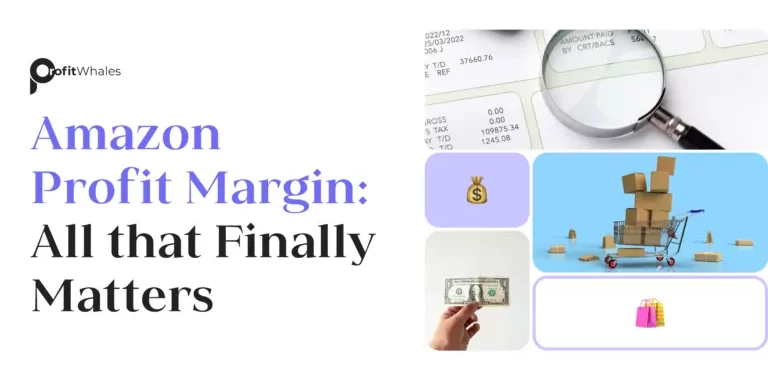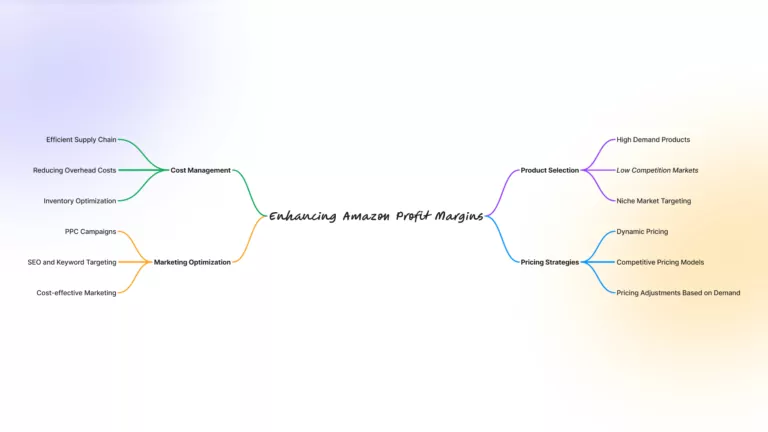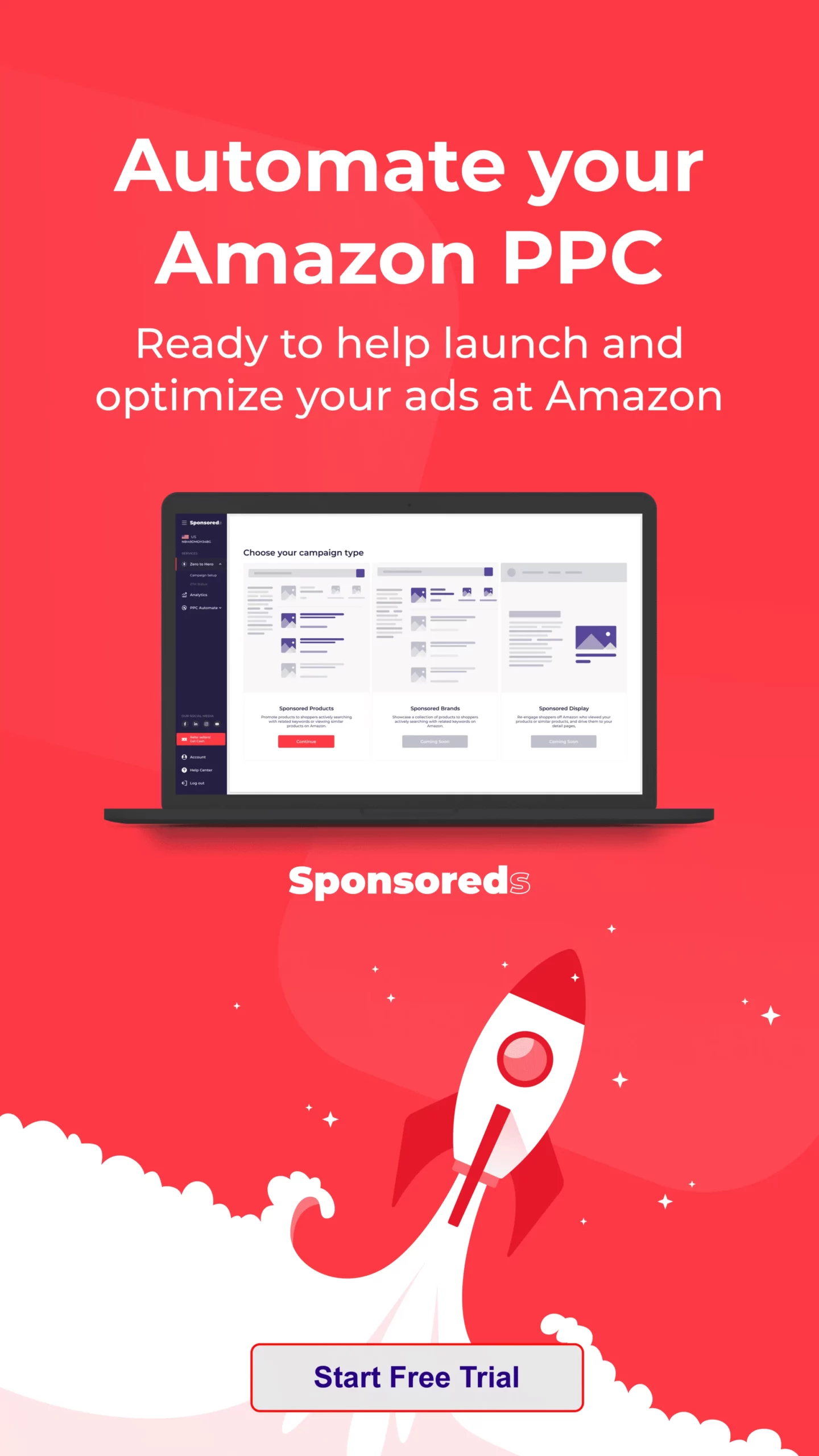Introduction
Navigating Amazon’s marketplace efficiently demands a thorough understanding of Amazon profit margins, which are pivotal for assessing business performance. For sellers, the difference between mere survival and thriving profitability lies in mastering these financial metrics. This comprehensive guide delves into the intricacies of Amazon profit margins, from fundamental concepts to advanced strategies, ensuring that businesses can maximize their financial outcomes. Understanding and optimizing Amazon profit margins are crucial for making informed decisions that lead to sustainable growth and increased market competitiveness.
Overview of Amazon Profit Margins
A complex interplay of factors, including product type, market competition, operational efficiency, and cost management, influences Amazon’s profit margins. These margins are pivotal in determining how much profit you can extract from your sales after covering all expenses. Different types of Amazon profit margins—gross, operating, and net—offer insights into various aspects of your business health. Gross Amazon profit margins reflect the direct profitability of your products, operating Amazon profit margins provide a snapshot of business efficiency excluding non-operational costs, and net Amazon profit margins account for all expenses, giving a clear picture of your bottom-line profitability. Understanding these distinctions is key for Amazon sellers to strategize effectively and ensure their business operations yield desirable financial results.
What Defines a Good Amazon Profit Margin?
Identifying what constitutes a good Amazon profit margin is crucial for setting realistic financial goals and benchmarks. Typically, a healthy Amazon profit margin will vary by product category but generally falls within the 15% to 20% net margin range after all expenses. However, products with unique value propositions or lower competition might yield higher Amazon profit margins. It’s essential to not only aim for these targets but also understand the underlying factors that can influence Amazon profit margins such as supply chain efficiencies, pricing strategies, and market demand dynamics. By benchmarking against industry standards and continuously monitoring Amazon profit margins, sellers can adapt their strategies to maintain or improve their profitability.
Understanding Margin Metrics
Deepening our understanding of margin metrics can significantly aid in strategic decision-making. Gross Amazon profit margins are significant for gauging the direct profitability of the products sold. They help determine if a product is priced appropriately relative to its cost of goods sold (COGS) and if there are opportunities to reduce costs or adjust prices. Operating Amazon profit margins expand on this by considering the day-to-day costs of running the business. This includes marketing expenses, administrative costs, and other operational expenses. A robust operating Amazon profit margin suggests that the business is profitable on a product basis and managed efficiently. Net Amazon profit margins are the most comprehensive indicator, encompassing all aspects of the business cost structure, including taxes and financing costs. They provide a clear picture of what is ultimately available to the business owners as profit. They can indicate the business’s overall health, guiding strategic decisions regarding growth, investments, and potential dividends.
Essential Metrics for Amazon Profitability
Sellers must focus on several key financial metrics to effectively manage and enhance Amazon’s profitability. These include the essential Amazon profit margins and additional indicators like the Cost of Goods Sold (COGS), operating expenses, and revenue growth rates.
Gross, Operating, and Net Amazon Profit Margins
Understanding these three essential Amazon profit margins provides a framework for evaluating business health at multiple levels:
- Gross Amazon Profit Margin: This is calculated by subtracting the COGS from total sales revenue. It shows how much a company earns considering the costs directly associated with producing the goods.
- Operating Amazon Profit Margin: This takes the gross profit and subtracts all operating expenses, like marketing, administration, and logistics. It indicates the efficiency of the business operations.
- Net Amazon Profit Margin: This is the bottom line derived after all expenses, including taxes and interest, have been deducted from total revenue. It shows the actual profitability of the business after all financial obligations are met.
Calculating Your Amazon Profit Margin
Calculating your Amazon profit margin requires a clear understanding of all revenue streams and associated costs involved in selling your products. This calculation subtracts all expenses, including cost of goods sold (COGS), Amazon fees, shipping costs, and marketing or operational expenditures, from your total sales revenue. By regularly analyzing Amazon profit margins, sellers can make informed decisions about pricing, promotions, and inventory management, ensuring their business remains profitable and competitive in the Amazon marketplace.
Step-by-Step Guide to Amazon Profit Calculations
Calculating your Amazon profit margin involves several steps that account for various business costs and revenues:
- Total Revenue: Start by calculating the total revenue generated from your Amazon sales.
- Subtract COGS: Deduct the costs associated with producing or purchasing your goods.
- Deduct Operating Expenses: Subtract all operational costs, including Amazon fees, marketing expenses, and shipping costs.
- Determine Net Profit: Your net profit is the remaining amount after all deductions. This figure is crucial for understanding the overall profitability of your Amazon business.
Why Amazon Profit Margins Are Crucial
Amazon profit margins are critical indicators of your business’s operational health and market position on Amazon. They reflect the efficiency of your operations and the effectiveness of your overall business strategy. A robust Amazon profit margin ensures that you have sufficient funds to reinvest in your business, which can be crucial for scaling up operations, launching new product lines, or enhancing marketing efforts. Strong Amazon profit margins also provide a buffer against financial downturns, allowing businesses to withstand market fluctuations without compromising their operational integrity. Maintaining healthy Amazon profit margins is essential for long-term sustainability and financial security in the competitive Amazon marketplace.
Impact on Business Decisions and Growth
Amazon profit margins play a pivotal role in shaping strategic business decisions on Amazon. They directly influence how a business allocates resources across various functions, including product development, marketing, and supply chain management. High Amazon profit margins enable companies to pursue more aggressive growth strategies, such as expanding into new markets or investing in expensive marketing campaigns to acquire market share quickly. Conversely, thin Amazon profit margins might necessitate a more conservative approach, focusing on cost reduction, improving operational efficiencies, and refining pricing strategies to protect the bottom line. Effective management of Amazon profit margins thus becomes a balancing act that significantly impacts a business’s ability to grow and adapt in a rapidly changing e-commerce environment.
Strategies to Enhance Your Amazon Profit Margins
To boost Amazon profit margins, Amazon sellers can adopt several strategic approaches. These strategies focus on optimizing product selection, pricing models, cost management, and marketing efforts to maximize profitability.
Selecting the Right Products
Choosing the right products to sell on Amazon is fundamental to achieving high Amazon profit margins. Products that cater to specific niche markets or possess unique selling propositions (USPs) often face less competition, allowing for better pricing control and higher customer loyalty. Sellers should conduct thorough market research to identify underserved niches or trends that can be capitalized on. By focusing on products with inherent demand and low competition, sellers can maintain a steady sales flow with more substantial Amazon profit margins.
Pricing Strategies for Maximum Profitability
Effective pricing strategies are critical for maximizing profitability on Amazon. Dynamic pricing allows sellers to adjust their product prices in real-time based on market conditions, competitor actions, and demand fluctuations. This strategy helps sellers capitalize on high-demand periods by raising prices to maximize revenue and lowering them during slower periods to maintain sales velocity. Utilizing tools that automate pricing adjustments can help sellers stay competitive without constantly monitoring their listings.
Cost Management and Reduction
Cost management is a pivotal strategy for improving Amazon profit margins. Sellers can enhance their Amazon profit margins by negotiating better purchase terms with suppliers, which may include discounts for bulk purchases or improved payment terms. Optimizing inventory levels helps reduce holding costs, which can erode Amazon profit margins if not managed carefully. Streamlining operations to eliminate waste and reduce operational inefficiencies can lead to significant cost savings and improved profitability.
Inventory Management Techniques
Effective inventory management is essential to prevent profit loss. Overstocking can tie up capital and increase holding costs while understocking risks missing potential sales. Implementing a just-in-time inventory system can help sellers align their stock levels closely with demand, reducing unnecessary storage costs and minimizing the risk of obsolescence. Automated inventory management tools can also help track stock levels in real-time, helping sellers make informed decisions about restocking and sales strategies.
Optimizing Marketing and Amazon PPC Campaigns
Marketing and Pay-Per-Click (PPC) campaigns are crucial for driving visibility and sales on Amazon. Regularly reviewing and optimizing these campaigns based on performance metrics can help sellers allocate their marketing budget more effectively, ensuring that they invest in high-performing keywords and ad placements. Effective PPC management can significantly enhance product visibility, increase sales, and improve Amazon profit margins. It’s essential for sellers to stay updated with Amazon’s advertising tools and best practices to maintain an edge in a highly competitive market.
Leveraging Amazon FBA for Better Margins
Using Amazon’s Fulfillment by Amazon (FBA) service can significantly reduce the logistical burdens associated with storage, packing, and shipping. While FBA does incur fees, the benefits of faster shipping and increased customer satisfaction often lead to higher sales volumes and can offset the additional costs. Furthermore, products fulfilled by Amazon are eligible for Prime, which can increase visibility and appeal to a broader customer base. Sellers should analyze the cost-effectiveness of FBA for their specific products to determine if the potential Amazon profit margin improvements outweigh the fees involved.
Long-term Thinking for Sustainable Profits
Adopting a long-term perspective is vital for any Amazon seller aiming for sustainability in a marketplace as volatile and competitive as Amazon. This approach involves more than maximizing immediate profits; it requires a strategic plan for growth and stability that anticipates future market conditions and evolves with consumer trends. Sellers should invest in scalable systems and processes that support expansion, whether it’s entering new markets, extending product lines, or leveraging new technologies for better efficiency. Developing a solid brand identity and customer loyalty also plays a crucial role, as these elements can drive repeat business, which is often more profitable than continuously acquiring new customers. Long-term thinking also involves sustainable practices, such as managing environmental impact and ensuring ethical supply chains, which can reduce costs and appeal to the growing demographic of eco-conscious consumers.
Customer Acquisition Cost (CAC) and its Impact
Understanding and managing Customer Acquisition Cost (CAC) is critical for maintaining profitability on Amazon. CAC is the cost associated with convincing a customer to buy a product/service, including marketing and advertising expenses divided by the number of new customers. In the context of Amazon, where competition can drive up advertising costs, optimizing marketing strategies to lower CAC is essential. This involves targeting the right audiences, refining advertising campaigns, and improving the conversion rates of listing pages. Additionally, enhancing customer lifetime value (CLV) — the total revenue a business can reasonably expect from a single customer account — mitigates the impact of high CAC. Strategies to increase CLV include improving product quality, offering excellent customer service, implementing loyalty programs, and using data analytics to offer personalized experiences. The balance between CAC and CLV is crucial; a lower CAC coupled with a higher CLV leads to increased profitability and allows more room for reinvestment into the business.
Importance of Continuous Monitoring and Adjustments
The dynamic nature of the Amazon marketplace necessitates continuous monitoring and timely adjustments to remain competitive. This includes regular analysis of financial metrics such as Amazon profit margins, sales trends, and operational costs. Monitoring market trends and consumer behavior can also provide insights into potential opportunities for new products or adjustments to existing products. Additionally, keeping an eye on competitors’ strategies and performance is crucial; this can help you anticipate market shifts and adapt your strategies accordingly. A robust analytics system can aid in this ongoing monitoring, providing real-time data to make informed decisions quickly.
Common Challenges and Solutions
Amazon’s marketplace is highly competitive, with numerous sellers seeking attention in the same product categories. This intense competition can pressure sellers to lower prices, which may compress Amazon profit margins unless they find effective ways to differentiate their offerings or enhance operational efficiencies.
Market conditions on Amazon are also subject to fluctuations due to various external factors such as economic shifts or changes in supply chain logistics, which can affect sellers’ abilities to maintain stock and fulfill orders efficiently. Additionally, consumer preferences are ever-evolving, with shoppers increasingly seeking products that offer value and align with broader trends like sustainability and personalization.
Final Thoughts and Key Takeaways
Successfully navigating the competitive landscape of Amazon requires a deep understanding of Amazon profit margins and a strategic approach to business management. It is crucial for sellers to focus on optimizing these financial metrics and ensure they are agile and responsive to the ever-changing market conditions and consumer behaviors.
Amazon profit margins are influenced by many factors, from operational costs and pricing strategies to market positioning and consumer satisfaction. Sellers must monitor Amazon profit margins closely, understanding that effective management of these elements can drive business decisions that enhance profitability and sustainability.
Adopting flexible and responsive pricing, marketing, and inventory management strategies allows sellers to adapt quickly to market changes and consumer trends. Continuous innovation in products and processes helps maintain relevance and competitive advantage, ensuring the business remains robust against market pressures.
Ultimately, the ability to integrate deep market insights with strong operational practices will enable Amazon sellers to not only survive but thrive in this dynamic and challenging marketplace. This comprehensive approach to understanding and optimizing Amazon profit margins while adapting to market dynamics is essential for any seller aiming for long-term success on Amazon. For more insights and strategic advice on maximizing your Amazon sales, visit Profit Whales.
FAQ
How does seasonality affect Amazon profit margins?
Seasonality plays a significant role in shaping Amazon profit margins, as consumer demand can vary greatly throughout the year. Sellers need to plan inventory and pricing strategies to capitalize on peak seasons and minimize losses during off-peak times.
Can promotional strategies significantly alter Amazon profit margins?
Yes, effective promotional strategies can significantly impact Amazon profit margins by increasing product visibility and sales volume. However, these promotions must be carefully managed to ensure they do not erode Amazon profit margins through excessive discounts or increased operational costs.
What are the common hidden costs that can erode Amazon profit margins?
Hidden costs on Amazon include long-term storage fees, returns processing, and non-compliance penalties, which can unexpectedly reduce Amazon profit margins. Sellers must monitor these costs and implement strategies to minimize their impact.
How do return policies impact Amazon profit margins?
Return policies, while essential for customer satisfaction, can affect Amazon profit margins if not managed properly. High return rates can lead to increased costs in processing returns, restocking, and potentially selling items at discounted prices, thereby reducing overall profitability.
What role does customer feedback play in shaping Amazon profit margins?
Customer feedback is critical in shaping product offerings and improving service quality, which can influence Amazon profit margins. Positive reviews and ratings enhance product credibility and can lead to higher sales volumes, while negative feedback can deter potential buyers and reduce sales, impacting profitability.








